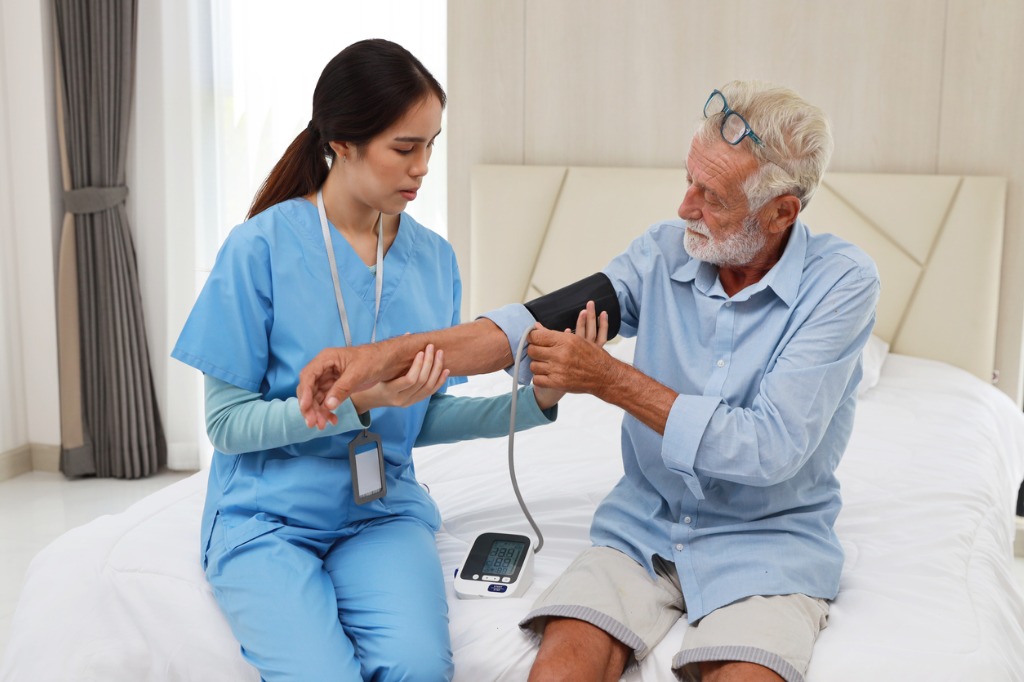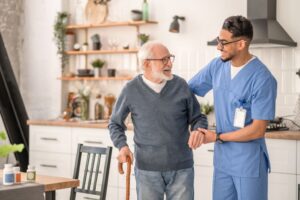Safety Tips for Home-Based Care

We will explore essential safety guidelines and strategies for creating a secure and nurturing home-based care environment. These guidelines are crucial to ensure the well-being of both caregivers and patients, with a focus on the important role of BNV Homecare in providing comfort and assistance to individuals in need due to age, illness, or disability.
General Safety Guidelines
- Clean and Organized Space: A tidy, well-organized space minimizes the risk of accidents and enhances the efficiency of caregiving tasks. Clear pathways and declutter common areas.
- Slip, Trip, and Fall Prevention: Identify and address potential hazards like loose rugs, electrical cords, or wet surfaces. Install non-slip mats in the bathroom to prevent falls.
- Proper Lighting: Adequate lighting is crucial, especially during nighttime. Install nightlights in hallways, bathrooms, and other high-traffic areas.
- Fire Safety: Safety measures like smoke detectors and fire extinguishers should be in place and regularly maintained. Conduct fire drills with both caregivers and patients.
- Emergency Contacts: Keep a readily accessible list of important phone numbers, including healthcare providers, family members, and local emergency services.
Infection Control
- Hand Hygiene: Stress the importance of regular handwashing for both caregivers and patients. Provide hand sanitizers throughout the home.
- Personal Protective Equipment (PPE): When dealing with infectious or potentially hazardous materials, ensure that caregivers wear appropriate PPE, including gloves and masks.
- Medical Waste: Dispose of medical waste, such as used needles and dressings, in designated containers following local regulations.
- Isolation Precautions: If a patient has a contagious illness, follow isolation guidelines to protect other household members. Educate caregivers on proper precautions.
Medication Management
- Medication Storage: Store medications in a cool, dry place, away from direct sunlight, and out of reach of children and pets. Use a pill organizer to keep dosages organized.
- Administering Medications: Carefully adhere to prescribed dosages and schedules. Maintain a medication log to track administration and be vigilant for any potential side effects.
- Communication: Maintain open lines of communication with healthcare providers to promptly address concerns or medication-related issues. Regularly review medications with healthcare professionals.
Mobility and Transfer Safety
- Assistive Devices: Provide and regularly maintain assistive devices like wheelchairs, walkers, canes, or grab bars to enhance mobility and safety within the home.
- Transfer Techniques: Learn and practice safe patient transfer techniques to prevent injuries to both caregivers and patients. Use proper body mechanics to reduce strain.
- Pressure Ulcer Prevention: For bedridden patients, regularly rotate their position and use pressure-relieving mattresses to prevent painful and potentially dangerous pressure ulcers.
Emergency Preparedness
- Emergency Plan: Develop a comprehensive emergency plan that includes evacuation routes, designated meeting points, and a list of essential supplies, including medications.
- Drills and Training: Conduct regular emergency drills with both caregivers and patients to ensure everyone knows what to do in various scenarios. Update the plan as needed.
- Medical Supplies: Keep a well-organized and easily accessible supply of necessary medical equipment and medications to manage emergencies effectively.
Communication and Documentation
Effective communication and meticulous documentation are the cornerstones of successful home-based care. Clear and open communication among caregivers, healthcare providers, and patients ensures that everyone is on the same page regarding the care plan, any changes in the patient’s condition, and potential concerns. Detailed documentation of caregiving activities, medication administration, vital signs, and observations not only aids in monitoring the patient’s progress but also provides a comprehensive record for healthcare professionals, enabling them to make informed decisions and adjustments to the care regimen as needed.
Conclusion
In the realm of home-based care, safety is paramount. By implementing these detailed safety guidelines, caregivers can establish a secure and nurturing environment that not only promotes the physical well-being of patients but also offers peace of mind to patients and their families. It’s crucial to remember that each patient’s needs are unique, so adapt these guidelines to specific situations and seek guidance from healthcare professionals when necessary. Your dedication to safety will contribute to the comfort and recovery of those under your care.







